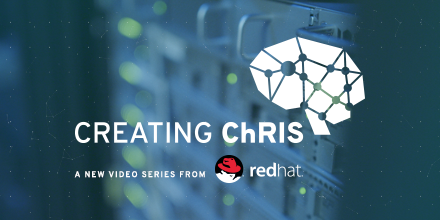Red Hat announced its collaboration with Boston Children’s hospital on the ChRIS Research Integration System and how it is deployed into the Mass Open Cloud (MOC) backed by Red Hat OpenShifton Red Hat OpenStack this year at Red Hat Summit. This collaboration provides ChRIS with a great mix of containerized application deployments along with the infrastructure essentials of elastic compute, dynamically provisioned storage backed by Cinder/Ceph, and object storage provided by Swift (also backed by Red Hat Ceph).
The features of this story are ones most everyone has come to expect with cloud environments, so I’d like to focus on how the MOC and its use of OpenShift on OpenStack is pushing a new model of cloud computing—an open model—that leads to several advantages.
The advantages of a new kind of cloud
The MOC serves multiple purposes. It’s a cloud computing environment backed by five universities and multiple industry and government partners. Each of those entities use the MOC for its computing capabilities and cost efficiency. The MOC is also a research facility that benefits from the demand of its partners by allowing it to scale. At the same time, the consumers of the MOC benefit because the research is usually targeted at improving their use cases.
 The MOC itself has been on the cutting edge of OpenShift/Kubernetes environments. Earlier versions of Kubernetes did not allow containers to make use of dedicated hardware—like graphics processing units (GPUs)— directly. This is a problem Red Hat and the larger Kubernetes community have worked to solve to allow containerized applications to make use of compute power provided by GPUs.
The MOC itself has been on the cutting edge of OpenShift/Kubernetes environments. Earlier versions of Kubernetes did not allow containers to make use of dedicated hardware—like graphics processing units (GPUs)— directly. This is a problem Red Hat and the larger Kubernetes community have worked to solve to allow containerized applications to make use of compute power provided by GPUs.
As access to GPU-enabled hardware within OpenShift advanced from alpha to beta to general availability, the ChRIS deployment on the MOC was able to see the advancements first hand, provide feedback on the experience, and prepare medical image processing applications for the future state of the technology. GPUs are, however, just the beginning of the value ChRIS has received from being on the MOC. Other research in the areas of storage, security, and logging/tracing are ongoing and will help shape the direction of ChRIS. And, of course, that research will benefit other users of the open source technologies used to power ChRIS.
Collaboration brings unique benefits
The heart of this story is that the MOC is not a closed ecosystem. Solving the problems of medical image processing becomes a collaboration when the software being used is itself an open ecosystem. The MOC community prides itself on creating an open exchange of technologies, where service providers compete to provide the best solution. This differs from other public clouds where the preferred solutions are usually owned by the cloud provider and exist first and foremost as a vendor lock-in mechanism.
Looking into the future, the MOC is working toward a model where compute resources can be shared across multiple clouds. Nearly every compute environment and datacenter have moments of under-capacity usage as well as moments where they could use more resources if they were available.
The MOC sees this as an opportunity to define a set of standards for sharing resources across institutions. In this environment, each institution would donate their resources to a larger pool where their average consumption over a given time period would be limited to the size of their donation. At any given point, a participating institution would be able to expand to the size of the combined datacenters. You could imagine that time insensitive batch workloads could be pushed to off-peak hours and the datacenters could be optimized around the most critical workloads, including those like ChRIS.
On top of being a catalyst for medical innovation, the MOC/ChRIS project has been valuable to Red Hat. It’s provided a place for us to prove the capabilities of some of our most cutting-edge technology, find and solve issues before they get to our more cautious customers, and most importantly, it’s allowed us to foster a platform that’s trying to make a real difference in the world.
关于作者
产品
工具
试用购买与出售
沟通
关于红帽
我们是世界领先的企业开源解决方案供应商,提供包括 Linux、云、容器和 Kubernetes。我们致力于提供经过安全强化的解决方案,从核心数据中心到网络边缘,让企业能够更轻松地跨平台和环境运营。

